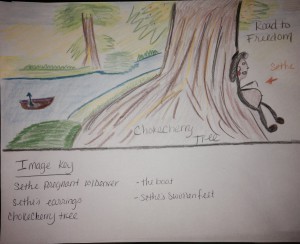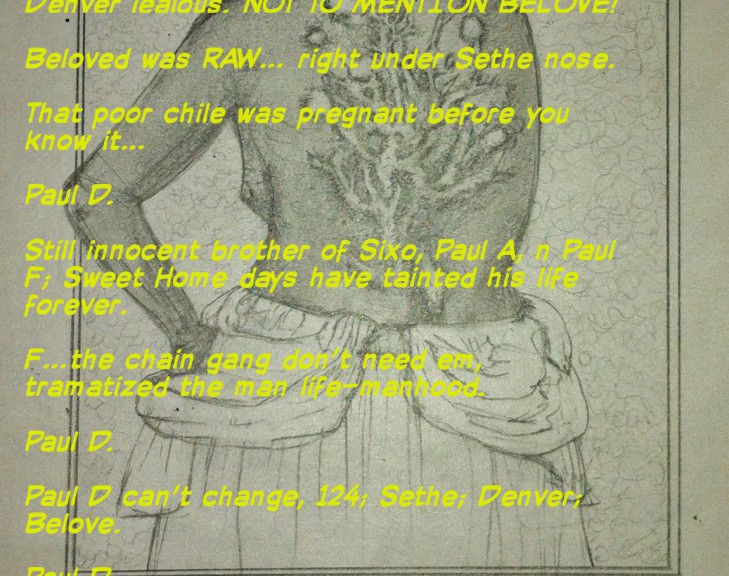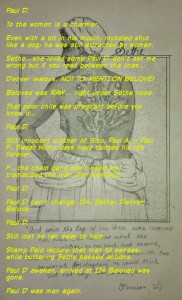As you prepare any last assignments and participate in our last discussion, I wanted to check in with you about tomorrow’s final exam:
- there’s a poll in the left sidebar asking you to choose the one topic you’re hoping will be on the exam. Please participate in that poll!
- Part 1 of the exam will be just like Part 1 of the midterm, but with different passages and somewhat different elements of fiction to choose from. But just the same you will have a choice of which to answer, and you will identify
- title
- author
- element of fiction
- how this element of fiction is exemplified in this passage (not just how you define the element of fiction).
- Part 2 of the final will be different from the midterm in that you won’t write the whole essay. Instead, you’ll write:
- the thesis statement that encapsulates your argument. This would be the last sentence in your introductory paragraph if you were writing the full essay,
- a paragraph that uses the five-step method for incorporating quotations as evidence, based on a quotation from a text we read after the midterm, which you will bring with you on your quotation sheet (Homework #15 is to make a quotation sheet),
- another paragraph that puts in comparison another passage from a text we read at any point in the semester, also using the five-step method.
- that’s it. To clarify, the quotation can be made of a few lines pieced together, rather than one solid block of quotation. The paragraph, if it feels too long, could be split for the sake of clarity.
- I’m happy to answer any questions. For the sake of organization, please add them to our Week 15 Discussion.
- To review: Five-Step Method for Incorporating Quotations
(adapted from Prof. Rebecca Devers’s IQIAA Method)- Within a paragraph, build your argument around the textual evidence:
- 1-Introduce: Use transitional phrases to inform your readers that you’re about to use someone else’s words.
- 2-Quote: This should not be its own sentence, but should be incorporated into another sentence. There is no restriction on quotation length per se, but it should be long enough to serve your argument while not too long to be treated properly in your paragraph. When you quote something or someone, you are obligated to represent the words accurately. This means avoiding typos and mistakes, and it means providing accurate citations that tell your reader what source provided the words or images.
- 3-Interpret: If a quotation can stand on its own without interpretation, then your readers don’t need to read your project or essay. Your job is to tell your readers what to understand about it so you read it the same way. After including a quotation, explain it to your readers. Put that quotation into your own words, or into a language or discourse that your audience can better understand. To get comfortable doing this, consider starting sentences after quotations with phrases like, “In other words, . . . .”
- 4-Analyze: Interpretation translates the original author’s words into a language your audience will understand. Analysis tells your readers why that quotation is so important. It highlights the significance of an author’s word choice, argument, example, or logic. Analysis goes beyond the obvious, telling the reader what they may have missed if they didn’t read as carefully as you are.
- 5-Apply: Each time you use a quotation, make it clear to your reader how it supports your argument. You can do that by applying your analysis to your thesis statement. Remind your readers of your purpose for writing, and tell them how this quotation, and your analysis of it, helps you support your argument.
- As you follow this method to construct a paragraph (or to write your broken-apart paragraph here), you may want to “quote the quote,” pointing to specific words or phrases within the quoted passage that carry meaning or deserve attention.






